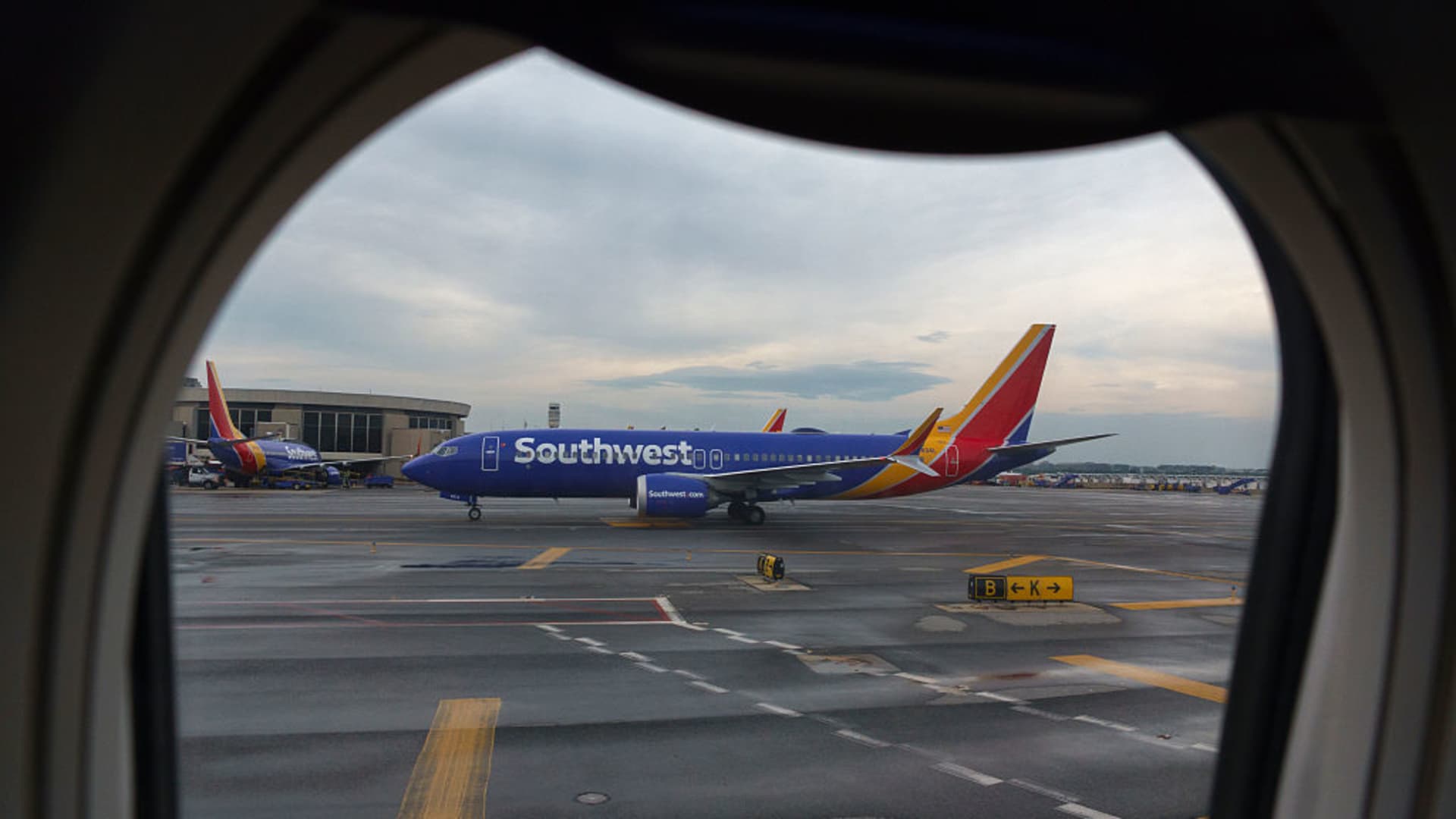Navigating Turbulence: A Deep Dive into Southwest Airlines’ Performance and Future Strategies
Introduction: A Mixed Flight Path
Southwest Airlines, a name synonymous with affordable air travel, finds itself at a critical juncture. Recent headlines paint a picture of fluctuating fortunes: a 30% slide in quarterly profits juxtaposed with instances of exceeding earnings expectations. This analysis delves into the complexities behind Southwest’s current performance, examining the factors contributing to its challenges and exploring the strategies the airline is employing to navigate the evolving landscape of the aviation industry.
The Shifting Sands of Demand
One of the most significant headwinds facing Southwest is the weakening demand for domestic travel, particularly among price-conscious leisure travelers. This softening demand has led to more empty seats and softer fares, directly impacting the airline’s bottom line.
Several factors contribute to this shift. The post-pandemic travel boom, fueled by pent-up demand, appears to be normalizing. Consumers, facing persistent inflation and economic uncertainty, are becoming more discerning with their spending. Two budget airlines that also target price-conscious travelers reported losses in the third quarter. With the peak travel season behind us, the airline now expects less revenue during the third quarter than it did earlier this year.
Southwest, with its strong focus on the domestic leisure market, is particularly vulnerable to these trends. While larger airlines with a more diversified customer base and international routes might be somewhat insulated, Southwest’s reliance on domestic leisure travel exposes it to the full force of these economic shifts.
Cost Pressures: A Growing Burden
Beyond demand-related challenges, Southwest is also grappling with rising costs. Labor expenses are a significant factor, as are the costs associated with maintaining and operating its fleet. The airline’s third-quarter profit fell by nearly two-thirds, to $67 million, on higher costs for labor and other expenses. As fuel costs fell, the budget airline flew fuller planes, but still experienced a decline.
These increasing expenses put further pressure on profitability, especially in an environment where the airline is struggling to maintain fares due to weaker demand. The confluence of these factors creates a challenging equation for Southwest, requiring careful management of both revenue and expenses.
Strategic Adjustments: Course Correction in Progress
In response to these challenges, Southwest is implementing a series of strategic adjustments aimed at restoring profitability and positioning the airline for future success.
Slowing Growth
Recognizing the need to better align capacity with demand, Southwest is slowing its growth rate. This move aims to absorb current capacity, mature development markets, and optimize schedules to current travel patterns. This decision suggests a shift from aggressive expansion to a more measured approach focused on efficiency and profitability.
Capacity Cuts
The airline plans to cut flights in the second half of 2025. As demand weakened throughout the quarter, it drove softness in bookings, particularly in domestic leisure travel.
Revenue Management and Marketing Evolution
Southwest is focusing on revenue management actions, network optimization, and marketing evolution to drive its quarterly revenue performance. This includes optimizing pricing strategies, improving customer engagement, and leveraging data analytics to better understand and anticipate travel trends.
Network Optimization
Optimizing the airline’s route network is another key strategy. This involves analyzing the performance of different routes, identifying underperforming ones, and reallocating resources to more profitable markets. The company’s quarterly revenue performance was driven by strong demand, revenue management advances, marketing evolution, and network optimization.
Focus on Ancillary Revenue
The company has focused on additional ancillary and loyalty program revenue during the summer travel season. This includes offering more personalized services, enhancing the in-flight experience, and expanding partnerships with other travel-related businesses to create additional revenue streams.
2025 and Beyond: Charting a New Flight Plan
Looking ahead, Southwest faces both opportunities and challenges. The airline’s strong brand reputation, loyal customer base, and efficient operating model remain significant assets. However, the evolving dynamics of the aviation industry, coupled with broader economic uncertainties, require Southwest to adapt and innovate.
Guidance Withdrawal
Southwest has pulled its 2025 financial guidance, citing economic uncertainty. This decision reflects the difficulty in predicting future performance in the face of volatile market conditions. The airline is taking a cautious approach, focusing on short-term stability and long-term strategic planning.
Activist Investor Pressure
Southwest Airlines will lay out a strategy to turn around its business and restore profit margins to pre-pandemic levels as the U.S. carrier faces pressure from an activist investor to shake up its management. This pressure could lead to significant changes in the airline’s leadership and operational strategies, potentially accelerating the implementation of new initiatives aimed at improving profitability.
Trade War Uncertainty
Southwest Airlines became the latest U.S. carrier to withdraw its financial forecast as President Donald Trump’s trade war has created the biggest uncertainty for the industry since the COVID-19 pandemic. The ongoing trade tensions and their impact on global supply chains and consumer confidence add another layer of complexity to Southwest’s strategic planning.
Conclusion: A Test of Resilience
Southwest Airlines is at a pivotal moment, a test of its resilience and adaptability. The challenges it faces – weakening demand, rising costs, and external pressures – are significant. However, the airline’s proactive response, including strategic adjustments to growth, capacity, and network optimization, demonstrates its commitment to navigating these turbulent times. The path forward will require careful execution, a continued focus on efficiency, and a deep understanding of the evolving needs and preferences of its customers. Whether Southwest can successfully chart a new flight plan and return to sustained profitability remains to be seen, but the airline’s history of innovation and its unwavering commitment to its core values suggest that it is well-equipped to weather the storm and emerge stronger.

